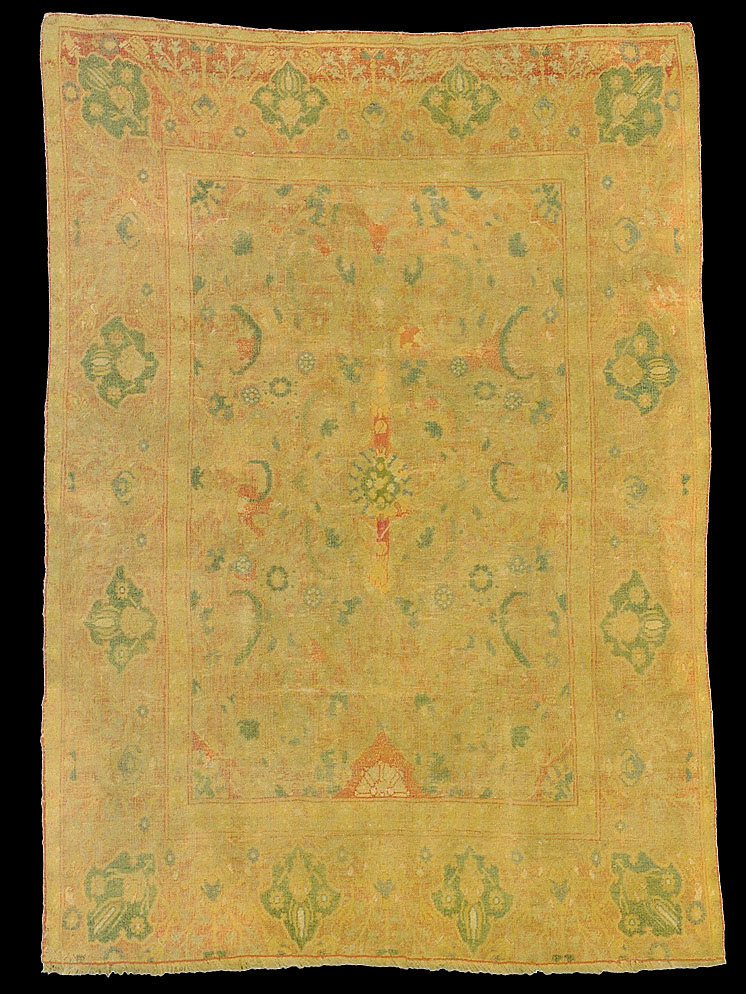|
Cairene
floral carpet
Sotheby's
Sale: N07919 | Location: New York
Auction Dates: Session 1: Fri, 19
Sep 03 10:15 AM
LOT 27 (of
108)
A CAIRENE RUG, OTTOMAN EGYPT
DATE OF OBJECT
late 16th
century
5,000—7,000 USD
Lot Sold. Hammer Price with Buyer's
Premium: 5,400 USD
measurements: approximately 6ft. 3in. by
4ft. 3in. (1.90 by 1.29m.)
CATALOGUE NOTE
In 1517 Egypt became part of the Ottoman
Empire and all aspects of Egyptian culture became increasingly dominated
by the Turkish style. Cairene carpets had previously displayed geometric
Mamluk designs but during the 16th century their rectilinear drawing was
replaced by a curvilinear Ottoman style introducing floral ornaments and
saz leaves, motifs commonly seen on contemporaneous Turkish ceramics and
architectural elements. Although the appearance of such carpets would seem
to suggest an Anatolian workshop, their asymmetrically knotted structure
and restrained palette are directly related to Mamluk production and to
their having originated within an Egyptian workshop. For a related Ottoman
rug see: Dimand, M. S. and Mailey, J., Oriental Rugs in the Metropolitan
Museum of Art, New York, 1973, Cat. No. 109, Fig. 192, pp.204 and 234.
CATALOGUE NOTE
In 1517 Egypt became part of the Ottoman Empire
and all aspects of Egyptian culture became increasingly dominated by the
Turkish style. Cairene carpets had previously displayed geometric Mamluk
designs but during the 16th century their rectilinear drawing was replaced
by a curvilinear Ottoman style introducing floral ornaments and saz
leaves, motifs commonly seen on contemporaneous Turkish ceramics and
architectural elements. Although the appearance of such carpets would seem
to suggest an Anatolian workshop, their asymmetrically knotted structure
and restrained palette are directly related to Mamluk production and to
their having originated within an Egyptian workshop. For a related Ottoman
rug see: Dimand, M. S. and Mailey, J., Oriental Rugs in the Metropolitan
Museum of Art, New York, 1973, Cat. No. 109, Fig. 192, pp.204 and 234

Image and information courtesy: John Taylor,
rugtracker.com
|

